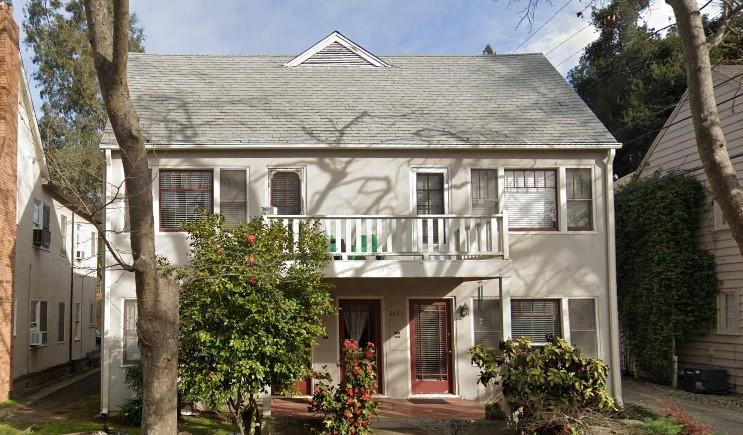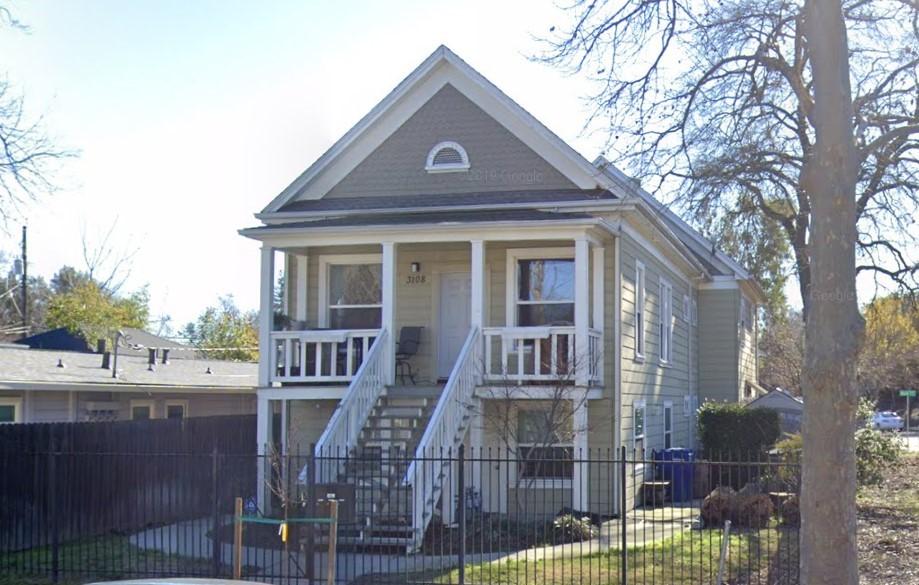Beyond the short term: Land use principles to advance fair housing goals
Karalee Browne is a program director for the Institute of Local Government and can be reached at kbrowne@ca-ilg.org.
The COVID-19 crisis has illuminated the inequities that exist in our cities. Perhaps one of the most glaring examples is the housing disparities that exist for renters and those experiencing homelessness. In general, these populations are more vulnerable than homeowners to the income disruption, stay-at-home policies, and mass layoffs caused by the COVID-19 pandemic. Over the past year, cities have implemented a variety of programs to help keep these vulnerable populations housed, but cities need to look beyond short-term relief. Local planning and policy decisions present some unique opportunities to remedy longstanding inequities, specifically through the housing element update process and activities related to AB 686.
What is AB 686?
AB 686 (Santiago) was passed by the legislature in 2018 to thwart federal efforts that eliminated state and local access to data and lowered requirements for federal housing grants that could eliminate discriminatory practices. The bill requires cities to administer programs and activities related to housing and community development in a manner that affirmatively furthers fair housing, which translates to a broad obligation to remedy patterns of segregation and discrimination.
Among other things, the bill requires that all housing elements due on or after Jan. 1, 2021, must “contain an Assessment of Fair Housing consistent with the core elements of the analysis required by the federal Affirmatively Furthering Fair Housing (AFFH),” part of the 1968 federal Fair Housing Act.
The act stipulates that affirmatively furthering fair housing means “taking meaningful actions, in addition to combating discrimination, that overcome patterns of segregation and foster inclusive communities free from barriers that restrict access to opportunity based on protected characteristics. Specifically, affirmatively furthering fair housing means taking meaningful actions that, taken together, address significant disparities in housing needs and in access to opportunity, replacing segregated living patterns with truly integrated and balanced living patterns, transforming racially and ethnically concentrated areas of poverty into areas of opportunity, and fostering and maintaining compliance with civil rights and fair housing laws.”
This means cities must do an evaluation, look at the data, engage the community, and create programs that address the patterns of segregation and discrimination revealed through their evaluation.
But cities throughout the state have been grappling with how to actually conduct the assessment and implement policies in accordance with state requirements. Not only that, the mandate comes at a time when local governments are dealing with shrunken budgets and ballooning Regional Housing Need Assessment numbers that are meant to accommodate a larger number of affordable units.
“While some may see the new requirements as burdensome, they actually present local jurisdictions with a great opportunity,” said the California Business, Consumer Services, and Housing Agency Secretary Lourdes Castro Ramírez. “By meeting state requirements, local jurisdictions can engage in meaningful actions to make their communities more just and prosperous by embracing equity, working to integrate neighborhoods, and reversing long standing racial and residential discrimination that has kept people of color out of certain neighborhoods.”
Managing director of the Terner Center for Housing Innovation at University of California, Berkeley Ben Metcalf says the first step is knowledge. “It’s important for policymakers to first understand the history of their community; particularly the prior patterns of land use and housing decisions that may not have considered a just and favorable society”.
While knowledge is power, even the best-intentioned public servant is destined to struggle through this process because logical solutions are often at odds with other policy imperatives. For example, staff in the planning department may be working to facilitate multifamily housing next to transportation hubs to reduce greenhouse gas emissions and traffic. However, the data collected through the AFFH process may show that the neighborhood already has a high concentration of poverty, and therefore the city should seek to zone multifamily housing in a more affluent area with access to better schools and services.
While this puzzle is not easy to solve, many cities are taking the issue to heart and leading in the process.
City of Sacramento
The city of Sacramento just took a major step toward becoming one of the first cities in California, and the third major city in the country, to allow a greater array of housing types in existing single-family neighborhoods. The move was initially characterized as an attempt to “eliminate single-family zoning,” but city staff say that is not the case.
“The idea arose from the public outreach associated with the city’s General Plan and Climate Action Plan update,” said Sacramento Assistant Planner Greta Soos. “Key themes of equity, affordable housing, and the need to reduce greenhouse gas emissions continually arose during those community conversations.”
Soos says this proposal could help address all three of those community concerns and create the “missing middle” housing the city most desperately needs. The idea is that the home fits within the existing neighborhood and might look like every other single-family home from the outside, but could actually be a duplex, triplex, or fourplex. This type of proposal may be more palatable in a city like Sacramento because homes like this already exist. In fact, there are over 2,300 of these housing types scattered throughout the city’s neighborhoods that were established before 1960.
“It’s really about offering more housing choices within a neighborhood,” said Sacramento Acting Long Range Planning Manager Matt Hertel. “One of the reasons why many of Sacramento’s desirable single-family residential neighborhoods remain largely racially segregated is because of past discriminatory practices of racially restrictive covenants, government-sponsored redlining, and subsequent zoning allowing only single-family homes, a more expensive product type. The exclusion of lower-cost housing types prevent lower-income residents from moving to neighborhoods with the best parks, schools, and other desirable amenities.”
This is not the only program that the city hopes to include in its housing element update to affirmatively further fair housing. The city is also proposing, among other things, to:
- Review the Mixed Income Housing Ordinance
- Expand housing types in single-unit zoning
- Rezone additional affordable housing sites in high resource areas
- Continue to analyze impediments to fair housing
Not only could policies like these help address equity issues and housing supply, they could make the city more competitive for state grant funding. The California Department of Housing and Community Development will be launching its Prohousing Designation Program in the coming months. Through this program, jurisdictions that receive a “Prohousing Designation” will receive incentives in the form of additional points or other preferences in the scoring of competitive state funding grant programs for affordable housing. One of the ways local governments can demonstrate that they are “prohousing” is by allowing a greater array of housing types in residential neighborhoods.
City of Indio
The city of Indio is also hoping to receive a ProHousing Designation from the state. The city proposed using its Local Early Action Planning (LEAP) grant funding to develop and implement prohousing policies. For the city of Indio, this means focusing on the fiscal issues that prevent housing from being built in their community.
“The state grant funding will allow us to understand and analyze the fiscal levers that are preventing housing from being built in our community,” said Indio Director of Community Development Kevin Snyder.
Developers have proposed a 184-unit all-affordable multifamily housing complex in the city, but are having trouble cobbling together the funding to build it. For a city that has been historically defined by low-density, single-family, and largely age-orientated housing, this project could show how the community can accommodate more multifamily housing.
“We made a paradigm shift when we adopted our updated General Plan,” said Snyder. “We are now having conversations we never had before about finding bold and innovative solutions to meet the state requirements and the needs of our community.”
While Snyder acknowledges the community need for affordable housing and his city council’s willingness to explore innovative solutions to make it happen, he says it will simply come down to the finances. “The bottom line is that we need gap funding and money for infrastructure to make housing happen.”
State Resources
The state just provided $98,852,732 through its LEAP Program to assist cities in planning for housing. In addition to that funding, the technical assistance team, in partnership with HCD, has created a Housing Hub Resource Center, which includes tip sheets, checklists, model ordinances, guidance documents, and toolkits.
The state is also offering several competitive grant programs to assist with affordable housing and infrastructure needs, including HCD’s Infill Infrastructure Program and the Strategic Growth Council’s Affordable Housing Sustainable Communities Program.
As part of the technical assistance offerings, ILG has developed a six-part webinar series to help agencies address housing in their community. Topics will include:
- Exploring New Housing Laws and Ordinances
- Effective Leadership in Housing and Development
- The Impact of COVID-19 on Housing and Housing Development
- Strategies to Engage Your Community on Housing Issues
- Equity in Housing: Meeting and Exceeding California’s Fair Housing Requirements
- Climate-Resilient Land Use & Housing Policies
For more information on how to register, visit ILG’s website.


